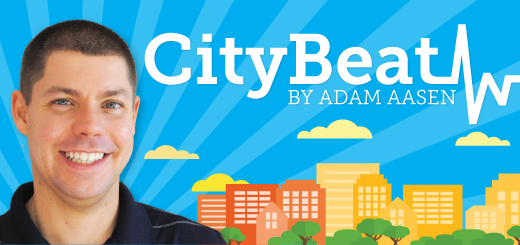In the preliminary plans for the first phase of the Midtown Plan, developer Justin Moffett has included room for “public square” that could be used for outdoor events and vendors. The new proposal for Pedcor’s City Center phase two includes plans for Spanish Stairs that could provide for an outdoor meeting space. More and more, Mayor Jim Brainard said planning for public spaces will important for developing Carmel’s core.
“It’s very important when you’re building at a higher density than we used to,” Brainard said. “Public spaces become very important. The massing and sizes become very important. There’s a great book by a British architect. Her husband was a psychologist and they did a lot of work on how people interact in different types of public spaces like that. It’s interesting. How tall is too tall that the people on the tallest floor can’t interact with people on the street. One of the mental health statistics for people on high rises versus low rises which is what we’re basically people at the City Center. We paid a lot of attention to make sure the massing and the sizes are right. We don’t want to be New York. We don’t even want to be a medium rise city. We want to be medium rise urban in this area.”
What would we use these public spaces for?
“Festivals, daily gathering places for people,” Brainard said.”I envision walking into one of these places and seeing retired people out there playing chess and checkers and reading the newspaper. And place where people come to buy good with market squares. People enjoying sitting in the sun and watching people. Outdoor movies, concerts, festivals. We could find a good outdoor square for ice skating. I could envision a carousel in one of them someday. Fun things for people to gather around.”
The book Brainard was referring to is “Genius of the European Square,” by Suzanne H. Crowhurst Lennard and Henry L. Lennard. The book analyzes how “Europe’s traditional multi-functional squares support social life and civic engagement.” I skimmed through a copy and found a few interesting statements.
——————————————————————–
Despite numerous negative influences in the 20th century — monopoly of the square for parking, domination by the tourist industry, specialization of uses, and modern commercial developments at the periphery of the city that diminish the square’s viability — most of Europe’s multi-functional town squares continue to serve as the heart of their city, as a catalyst for social life and democracy.
Pubs, beer halls and cafes also encourage sociability, but they are more exclusive and limit the circle of those that can be included. For instance, they most likely exclude children. Since a person’s multi-faceted identity emerges in interaction with varied partners, the exclusion of representative’s of any group limits a person’s identity.
Musicians and other performers on European squares are valuable catalysts for social life…such spontaneous delight breaks the serious routine of daily life and provides a taste of the shared joy that a genuine community festival establishes over a more extended time frame.
The vitality of most European squares is heavily dependent on a rich mix of uses in surrounding blocks; nearby streets contain apartments, workplaces, schools, services and shops providing the necessities of everyday life.
Public art on the main square portray’s the city’s identity.
——————————————————————–
Carmel already has many well-used public squares and meeting areas. There’s the gazebo near City Hall, used for CarmelFest. There are the greens outside of The Palladium. Plus, there are many private spaces — such as unused real estate in the Carmel Arts & District — that are often lent free of charge to the city to do events such as Jazz on the Monon or Santa Claus.
Often, many of the plans for public-private partnerships have included many plans for public spaces that don’t always make it into the final blueprints. Talk about some of the original ideas for the City Center and people mention some “extravagant ideas,” said City Councilor Luci Snyder. These ideas are often scaled back to meet the budgets.
There is a question among some about whether some of these public spaces are considered “infrastructure” which could be paid for through bonds repaid by tax increment financing. Certainly streets, parking garages and sidewalks are infrastructure, but would the City Center phase two’s Spanish Stairs meet that requirement? Corrie Meyer, director of the Carmel Redevelopment Commission, understands there might be some debate there.



